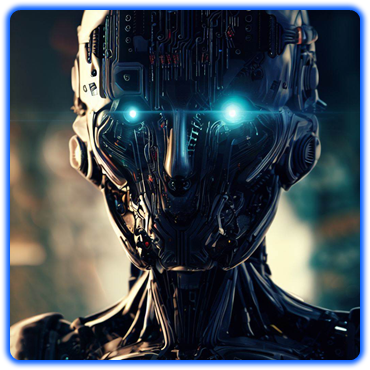In the popular science fiction series “Star Trek: The Next Generation”, viewers were introduced to groundbreaking technologies such as the food replicator and the holodeck. These devices allowed crew members to instantly create food, objects, and immersive virtual environments, seemingly out of thin air. While these technologies may seem like the stuff of pure innocent fantasy, Generative AI systems, such as the ones from OpenAI, have made significant strides in recent months. These models can create a wide range of content, from text and images to music and even 3D objects. The key to their success lies in their ability to understand and replicate patterns found in data. By learning these patterns, generative AI models can generate new, engaging and realistic content that is indistinguishable from human-generated content. the rapid advancements in Generative Artificial Intelligence could serve as the precursor to bringing them to life in the not-too-distant future. It’s not that hard to put 2 and 2 together and notice some similarities in the way in which an AI takes commands and then executes them. Yes, the answers that right now come out of a Generative Ai are not always perfect or reflect the intended use that was requested by the user, but they tend to be good enough in most cases for lighter tasks.
the rapid advancements in Generative Artificial Intelligence could serve as the precursor to bringing them to life in the not-too-distant future. It’s not that hard to put 2 and 2 together and notice some similarities in the way in which an AI takes commands and then executes them. Yes, the answers that right now come out of a Generative Ai are not always perfect or reflect the intended use that was requested by the user, but they tend to be good enough in most cases for lighter tasks.
In the context of Star Trek, the food replicators and holodecks can be seen as advanced applications of generative AI. The food replicator, for example, can synthesize any dish or beverage by rearranging matter on a molecular level. Meanwhile, the holodeck creates immersive, interactive environments that are virtually indistinguishable from reality. Both of these technologies rely on the ability to generate complex patterns accurately and consistently, much like the AI models of today. We only have to think of the possibilities. It’s also interesting why Elon Musk (and others, working in similar fields dealing with AI advances and progress in general) suggested that the programmers and scientists that created the recent AI apps should take a six month break to analyze the complexities of AI generated content. While generative AI excels at creating digital content, the leap to physical matter requires additional innovations. One promising avenue is the field of molecular assembly. This technology seeks to manipulate individual atoms and molecules, rearranging them into new structures and forms. By harnessing the power of molecular assembly, researchers could potentially develop a real-world analog to the food replicator.
Scientists are already exploring this concept through a technique called additive manufacturing, also known as 3D printing. By layering materials in precise patterns, 3D printers can create intricate objects and even edible food. The holodeck, on the other hand, represents the ultimate convergence of generative AI and immersive virtual reality (VR) technologies. Current VR systems can transport users into digital worlds, but the experience is limited by the quality of the content and the level of interactivity. Generative AI has the potential to revolutionize this space by creating lifelike environments and characters that react dynamically to user input. Imagine stepping into a VR environment where everything is generated by an AI system in real-time. The landscapes, buildings, and even the people you encounter would be the product of complex algorithms, adjusting and evolving based on your actions. By combining cutting-edge VR hardware with advanced generative AI models, we could one day create holodeck-like experiences that blur the line between the digital and physical worlds. As generative AI becomes more sophisticated, it could be combined with molecular assembly techniques to create a system capable of synthesizing a wide variety of foods on-demand, just like the food replicators in Star Trek.
As generative AI becomes more sophisticated, it could be combined with molecular assembly techniques to create a system capable of synthesizing a wide variety of foods on-demand, just like the food replicators in Star Trek.


